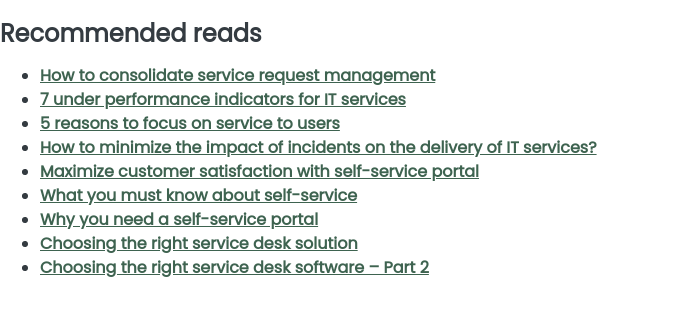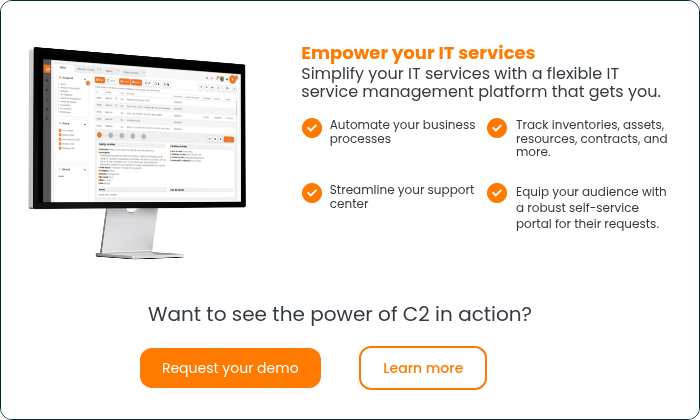In an age where technology is increasingly focused on the timely delivery of services, self-service options are an integral part of any company trying to exceed customer satisfaction.
Users are more literate on the subject and resourceful in their use of technology. Thus, expectations are high, and autonomy is a big deal. They seek tools allowing customers to quickly track their requests, round the clock, 365 days a year, to know the status of their orders at any time without generating additional work for your resources.
From the service provider’s perspective, a web portal provided by your ITSM tool also offers several compelling advantages :
- Requests that are more detailed and concise than an email can be processed through information input
- Reduced number of calls, which helps optimize request processing time
- Structured processing queue, ensuring support by appropriate resources without duplication of effort and redirection
- Centralization of information, allowing adequate monitoring, quality control and strategic analysis
- Implementation of best practices, such as ITIL® and Cobit®
5 key elements of an effective self-service portal
1. It should be simple to access and use. It is important not to duplicate portals, which could create confusion and frustration. Therefore, only one self-service portal should be used for the entire organization.
2. It is important for developers to set clear objectives and harmonize tools and processes to ensure the structure is concise and simple.
3. The key is to move gradually and adapt according to user feedback and service usage statistics. Therefore, start immediately with a limited service offering rather than attempting to offer a portal that includes all services but never actually implements it.
4. Adapt the solution according to customers, and never use technical terms they are not accustomed to.
5. All available services must be usage-oriented, in other words, the service must meet the needs of the user and provide added value
Things to avoid during implementation
It is impossible to get a commitment from 100% of users when it comes to change. Some welcome change, and who embrace new technologies quickly, and others who are more reluctant (usually until the old way is no longer available).
There are several pitfalls to avoid. The most important are the following:
- Not using the right persons, unilateral decision
- Excessively quick implementation
- Forgetting to conduct proper analysis, forgetting to review your service model and focusing too much on managing exceptions
- Creating a monster and feeding it with your ideas of greatness
- Minimizing the impact of customer experience and forgetting to take customers’ specific needs into consideration
- Skipping the pre-production phase and proper marketing of the portal
What benefits should I expect?
When a new tool is implemented, an analysis including ROI is required. The expected benefits are numerous, but what are they exactly? Expectations must be realistic and measurable. The objectives should be SMART (intelligent), an acronym for Specific, Measurable, Attainable, Realistic and Time-bound. Here is our list:
- A more efficient and cost-effective assignment of requests, established based on the expertise of resources, as well as on the types of request, which promotes increased productivity
- Increased quality level offered to customers
- Reduction of direct calls and requests from strategic use of tools such as messaging and knowledge base visible on the self-service portal
- Standardization of applications, reducing the number of customer follow-ups for additional information
- Centralized and standardized data for efficient analysis and monitoring, promoting a culture of continuous improvement






